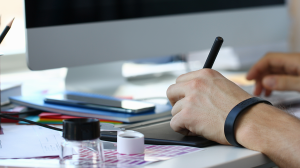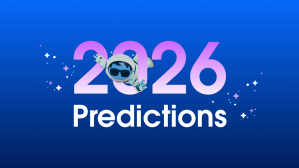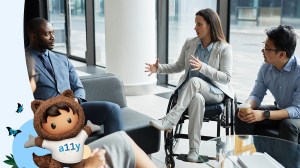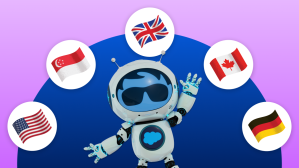Today, I’m honored and excited to welcome Elise Roy as Vice President, Product Accessibility and Inclusive Design.
In welcoming Elise Roy, we bring our Ethical Use and Product Accessibility teams together under one organization, deepening our commitment to inclusive design.
As Elise says, “When we design for disability first, we often stumble upon solutions that are better than those designed for the norm.” This is an incredibly important step in our journey. When we build products for everyone, we increase trust and adoption, grow our market, and find innovative solutions that benefit all.
In her new role, Elise will help build on the Product Accessibility team’s strong foundation, helping customers create accessible experiences for their own employees and customers and sharing best practices to further our communities.
Elise brings strong experience and expertise to the team — she is an inclusive design strategist and former human rights lawyer. Prior to joining Salesforce, she led Google’s Corporate Engineering Accessibility and Inclusive Design team and was responsible for ensuring inclusion in over 300 products.
I sat down with Elise (virtually, of course!) to talk more about her vision for Salesforce’s product accessibility and the experiences that brought her here.
Q. Tell us about yourself, Elise. What brought you into the product accessibility space?
I guess you could say curiosity brought me here. I love learning and experimenting.
Some years ago, I became fascinated with fabrication and threw myself into learning all I could. I recognized that a safety hazard existed for deaf and hard of hearing woodworkers due to my own hearing loss; woodworking tools often signal that they are about to kick back by a change in the pitch of the tool.
Like many others with disabilities, I have become a lifelong problem solver due to my disability. So, I decided to figure out a solution.
I developed a pair of safety glasses that visually alerted the user to pitch changes. You could program the light to go off before the human ear picked up the pitch change and it was something that could apply across a variety of tools. As a result, it benefited everyone and was something that DeWalt tools was interested in developing. I had unwittingly stumbled upon inclusive design’s benefit — how when we design for disability, we often create better solutions that benefit everyone, disability or not.
Q. What drew you to Salesforce?
Salesforce’s strong commitment to equality, to user feedback and the fact that they are one of the few tech companies that has a Chief Ethical and Humane Use Officer. Not only is it the type of company I want to work for, it will also provide a strong foundation for inclusive design to thrive.
Q. Elise, you and I have talked about how both inclusive design and ethics-by-design are not just the right thing to do — they lead to innovation and business growth. Say more about what you’ve learned on this front.
As our society and technology advances, we find ourselves accessing tech in all sorts of different environments and under different circumstances. When we do this, our capabilities change and we get what we call ‘situational disabilities’ where we experience a disability in the moment.
For example, if we are working in our home office, our kids might be tugging at our legs, distracting us. This is similar to what someone with ADHD experiences. Or if we are driving, we are essentially “blind” to anything but the road.
If we can design to account for such distraction or momentary “blindness,” we can help both types of users access our product. Solving for disability also makes us think outside the box because we learn from people who experience the world differently from us. It’s a powerful tool for innovative thinking in this sense.
Q. It’s your first day, so not too much pressure…but what are some of the things you’d like to achieve in year one?
My first task is to make sure I understand Salesforce — its people, products, resources, culture, and capabilities. Then, I’ll formulate a much more targeted plan on how to best mature accessibility capabilities and lay a foundation for inclusive design practice.
Q. What are some of the biggest obstacles companies face in building inclusive products?
I have seen a lot of companies struggle with prioritizing inclusive design, accessing users with disabilities for feedback and co-design, and inserting inclusive design and accessibility early in their development process. All of these are key to reaping the benefits of inclusive design.
Q. What is one step all business leaders can take to start on their own product accessibility journey?
Build with and learn from people with disabilities as often as you can. Ensuring diverse teams and reaching out to your users with disabilities to get their feedback and co-design together are key.
Q. And, just for fun — what does a typical weekend look like for you?
Lately, I have been spending my weekends in the ocean, learning to surf. I also love being in the woods rock climbing, cooking for friends (when possible) and flexing my creative muscles by making things with my hands. And of course, I derive a lot of laughs from watching my pup explore and discover the world.



















